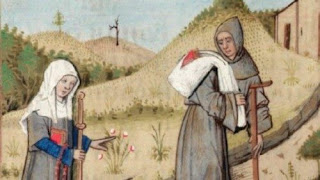Other cultures came up with different paradigms. Indian Ayurveda medicine believed in three humors (tissues, waste, and dosha, "that which can cause problems") and five elements (adding "space" to the four seen here).
These qualities were supposed to explain the functioning of the body as a balanced mixture. An unhealthy state was the result of the balance being thrown off, the excess or absence of one of the humors.
The arrangement familiar to the West likely started with Hippocrates (although there were others around his time who also expressed ideas about the four elements), who systematized the idea of different substances being balanced in humans:
The Human body contains blood, phlegm, yellow bile, and black bile. These are the things that make up its constitution and cause its pains and health. Health is primarily that state in which these constituent substances are in the correct proportion to each other, both in strength and quantity, and are well mixed. Pain occurs when one of the substances presents either a deficiency or an excess, or is separated in the body and not mixed with others. [On the Nature of Man, attributed to either Hippocrates or his son-in-law, Polybus]
Galen furthered this theory, tying it to seasons and stages of life. For instance, a child corresponded to spring. Blood was hot and wet, which corresponded to spring. Yellow bile, hot and dry, corresponded to summer, corresponding with the life stage of a young man, and so on.
The humors could also influence personalities; one Greek text put it thusly:
- The people who have red blood are friendly. They joke and laugh about their bodies, and they are rose tinted, slightly red, and have pretty skin.
- The people who have yellow bile are bitter, short tempered, and daring. They appear greenish and have yellow skin.
- The people who are composed of black bile are lazy, fearful, and sickly. They have black hair and black eyes.
- Those who have phlegm are low spirited, forgetful, and have white hair. [from link]
Humorism, or humoral theory, "explained" so much about physical health and temperament for 2000 years. The 1600s brought more exploration via surgery and the use of microscopes to better understand the function of the organs of the body and the fluids inside it. With the advent of germ theory, proposed in 1546 and expanded in the 18th century, the idea of humors fell by the wayside.
Of course, there was much more to medical treatment in the Middle Ages than just fiddling with the balance of humors. Sometimes you had to get out the knives. Let's talk about medieval surgery tomorrow.




























